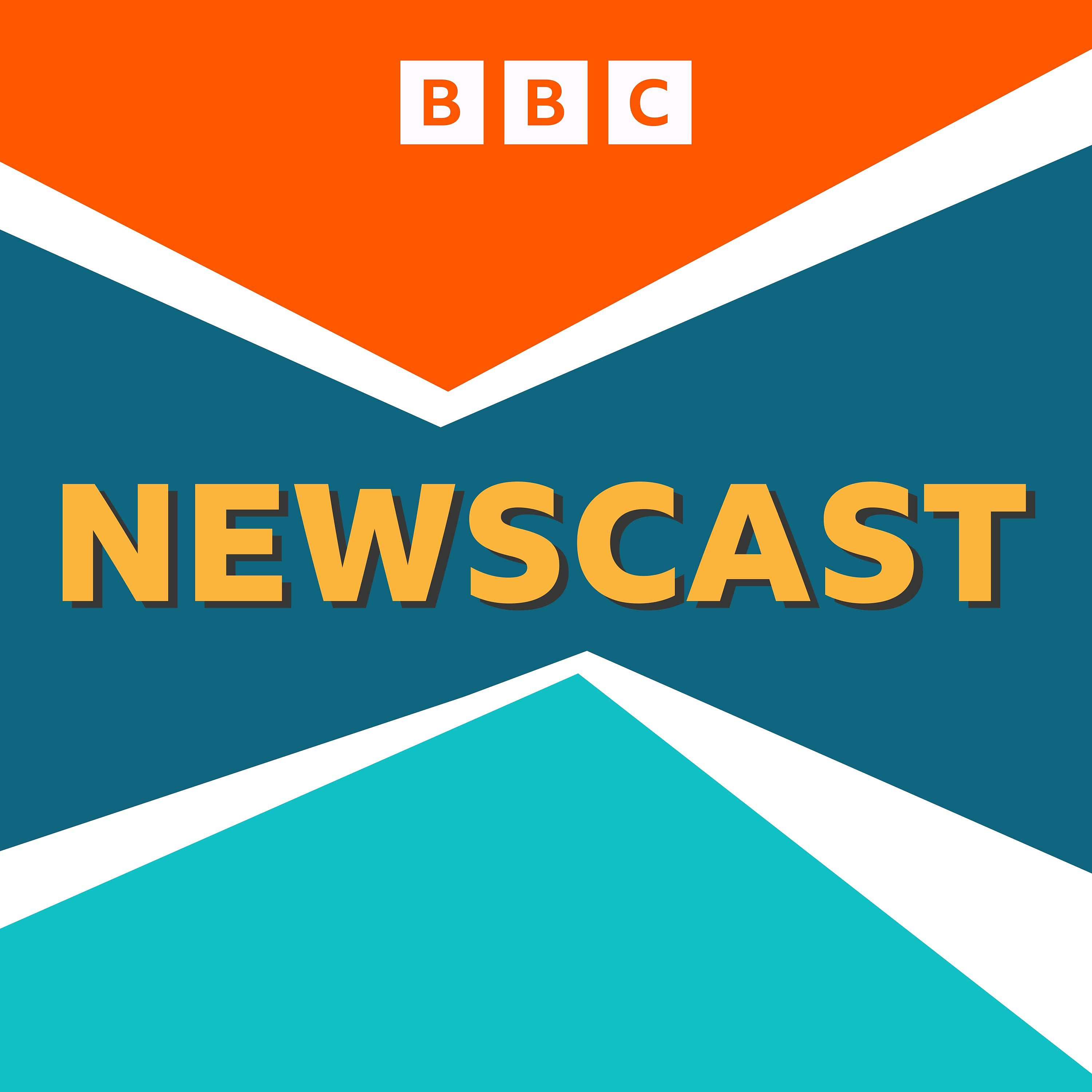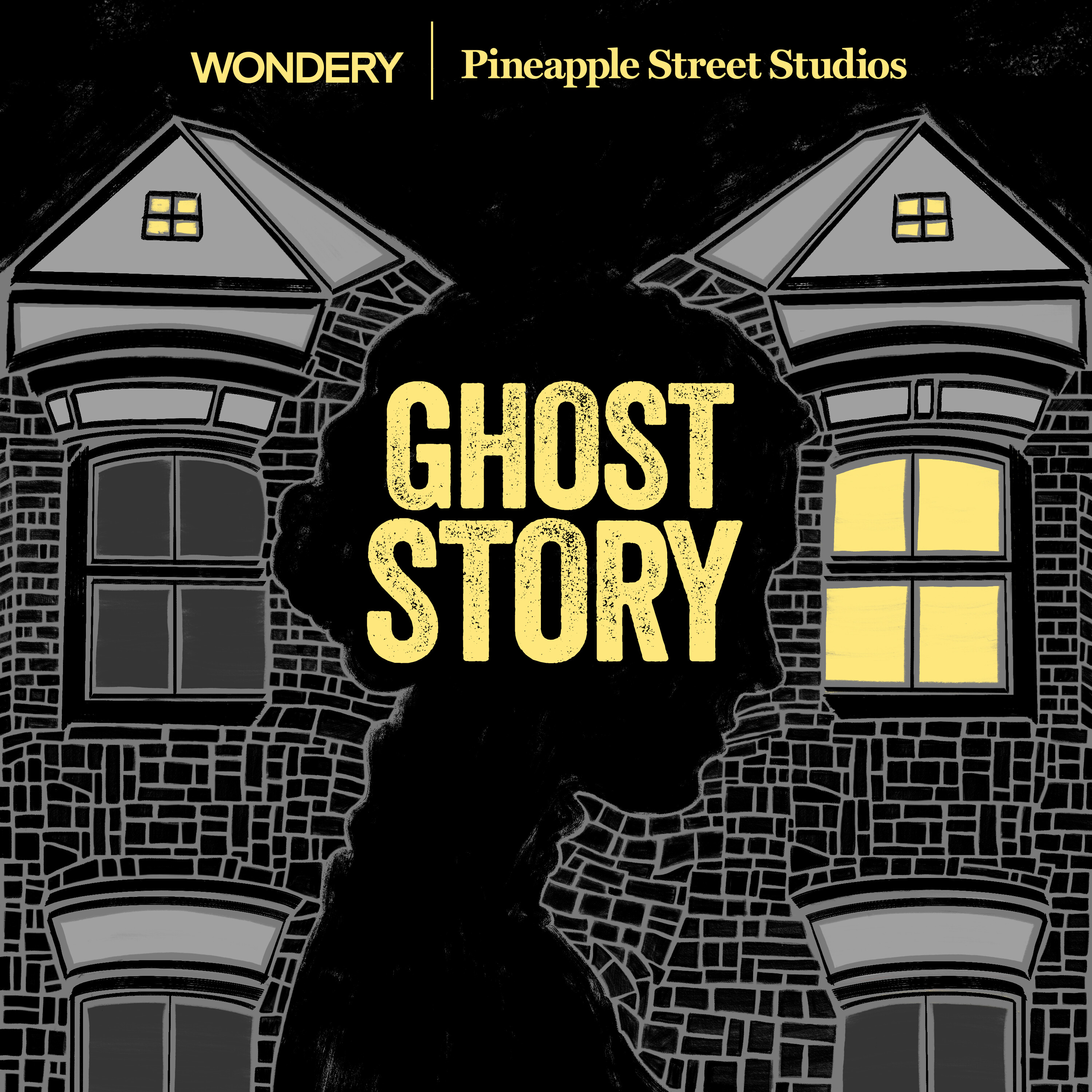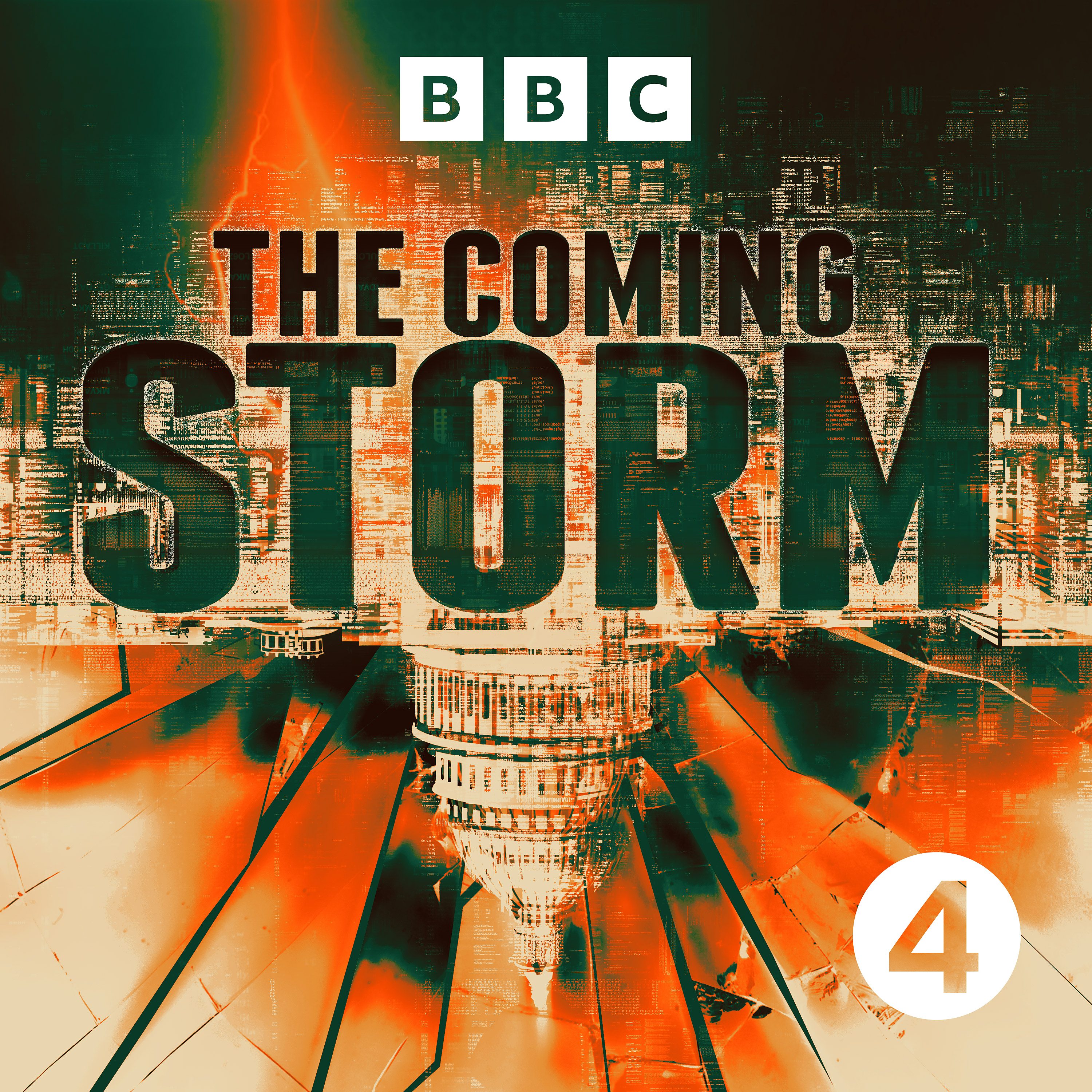
Brian's Run Pod
Welcome to Brian's Run Pod, the podcast where we lace up our running shoes and explore the exhilarating world of running. Whether you're a seasoned marathoner, a casual jogger, or just thinking about taking your first stride, this podcast is your ultimate companion on your running journey.
Join us as we dive deep into the sport of running, covering everything from training tips and race strategies to personal stories and inspiring interviews with runners from all walks of life. Whether you're looking to improve your race times, stay motivated, or simply enjoy the therapeutic rhythm of running, Brian's Run Pod has something for every runner.
Brian's Run Pod
Running Assessment with Arran Nicholson from Move Physio
Aaron's insights shine a spotlight on the technicalities that could revolutionize your run: from correcting overstriding and heel striking to building balanced strength for injury prevention and efficiency. I reflect on the mental hurdles and physical revelations from the session, sharing the valuable feedback that's reshaping how I approach each stride. If you're curious about how professional guidance could elevate your running game, this tale of transformation is not to be missed. Plus, I'll leave you with actionable training advice that could be the key to smoother, more powerful runs. Join us for this journey of self-discovery and find out how you, too, can step up your running performance with the help of Arran and Move Physio.
Move Physio
Brian's Run Pod has become interactive with the audience. If you look at the top of the Episode description tap on "Send us a Text Message". You can tell me what you think of the episode or alternatively what you would like covered. You might even get a mention!
Instagram
So you're thinking about running but not sure how to take the first step. My name is Brian Patterson and I'm here to help. Welcome to Brian's Rompod. Welcome back to brian's rompod, where it is me, brian patterson, your host, to talk to you about all things running related. Now I'm really excited to talk to you about today's episode and well, today I decided to bite the bullet and have a running assessment at the local physio running clinic.
Speaker 1:As you might know, I've been struggling with my running of late. Well, if you don't know, now you do. Well, aaron Nicholson from Move Physio previous guest on the podcast so if you go back to episode 46 and 47, has said that why don't you come down so I can assess your technique? So I thought I have nothing to lose. Down so I can assess your technique. So I thought I have nothing to lose, so let's go for it. Basically, the problems I'm having, the issues I'm having at the moment, I'm not doing massive mileage, in fact, it's pretty minimal. Basically, I run to the gym, which is about 1k, do a 3.2k interval session and then do some weights. So not a lot in the grand scheme of things. However, I am getting sore hips and noticing getting a sharp pain in my right knee by then way. I just go about twice a week. So I thought maybe I'm doing something wrong and get my running technique assessed and it might give me a clue as to what are the underlying factors, as to why I'm feeling like this. So I contacted Aaron and he said that he had a slot the next day.
Speaker 1:Anyway, the running assessment. So the structure of the running assessment. Now on the website, it says you'll be amazed at the simple steps you can take to improve your running, making you more efficient and less likely to pick up an injury. Then it goes on to say running is a highly technical sport that needs constant input. You need to ensure that your training and technique is efficient to enable you to maximize your performance and without increasing your risk of injury. So are you returning to running after a break, trying to achieve a new PB, taking on a running challenge and dealing with reoccurring injuries? We have the answer. We can help turn your technical flaws into strengths that will change the way you view running forever. So end of quote.
Speaker 1:So, as I had not signed up for one of their packages, I sort of felt hopeful that at least it could point me in the right direction. So there was initial Q&A. In the beginning I went through with Aaron what I had been doing lately, which is what I have described at the beginning of the podcast. So he then asked me what are my goals? Well, I said in the long term it would be to run a 10K in training or in a race. In the short to medium term it would be to do a 5K. And they are modest goals, I know, but I know these goals are different from everyone else.
Speaker 1:The only thing I did miss out on when I was looking to achieve these goals is they weren't smart goals, which I know we've covered in episode three. So I wasn't looking to set sort of like as to buy so and so time I wanted to achieve to be running a 10k or be doing 5k in so many minutes. Then we went on to the treadmill. So after the q, a aaron asked me to hop in the treadmill and he put me on the treadmill. So after the q, a aaron asked me to hop in the treadmill and he put me on the treadmill an incline of one and then set the pace to be about eight kilometers per hour, then increase the pace to around 9.5 kilometers for a couple of minutes and after that he pushed the pace to around 11 kph. While this was happening, he was taking a video with an ipad of my running cell. This is from behind and then from the side. Now I'll let you know the feedback I got later on in the episode. Then he looked at strength. Now he wants to assess my strength of my legs. Now, as I remember it, he targeted my calf hamstrings and glutes, so thestrings. He got me to line my back with my knees bent, put one foot off the ground and then raise my hips. This I found to be quite tough Calf he got me to stand up against the wall and then raise my heel with one leg but have the other leg off the ground. And the other challenge was to do as many as I can in a minute Quads. I'm pretty sure we did do some exercises for the quads, but that kind of escapes me at the moment.
Speaker 1:Flexibility this part of the examination is to see how flexible I am. Well, he got me to lie down and have my legs bent and he took one leg on his shoulder and then pushed it forward to stretch the hamstrings and then he proceeded to do with the other leg. Then he got me to cross one leg over to my straight leg and then lean onto the bent leg, which was, I think, to do the outer part of the quads. So I'm not have described it properly. Anyway, the point was to see how flexible I am. So how did I feel?
Speaker 1:Well, after the initial consultation and run through the different exercises, I felt the examination was very thorough and gave me an insight into my running style. For some reason I found the running on the treadmill really tough. I'm not sure if I wasn't feeling great or that it might have been nerves. The other thing is is that if you're feeling unfit, it really affects you mentally, and I may have brought this up with aaron that you're aware that you, what you have done in the past and now where you are, is now. I'm nowhere near that, so I suppose that is so. For instance, this would be kind of like a starting point from where they can looking to improve.
Speaker 1:I know my strength and flexibility is quite weak. However, I know these areas. I can improve about proof upon next, aaron kindly agreed to record a summary of all the tests that he carried out, so this is what he had to say. I'm here with Aaron at Move Physio and I've just had a running assessment and he's going to go through with me a summary of what he found. A couple of things, but not anything too drastic oh good Okay.
Speaker 2:So, as we kind of touched on on the on the video side of things, the main thing that we're, the main thing that we're looking for really on the on the video sort of footage, is anything drastic. It kind of puts us in the right ballpark as to what to look out for or potentially linking with some of your history which I'm sure you're filming in on but the main things really that we've we've've picked out on the running gate side of things is the difference and the change in your running style.
Speaker 2:Actually, when you're running at slightly quicker speeds to slightly slower speeds, and that's perfectly normal, the thing that I'm looking out for mostly with you is actually the difference in your right side, initial contact and kind of loading ability, in comparison to the left. So straight away that starts to kind of highlight is there potentially an injury deficit? Is there potentially a strength deficit, a flexibility deficit? And it kind of just starts to go okay, we need to ask a few more questions in a few more areas really. So, as we kind of ran through my, my main issue with that, with that right side, particularly when we're at higher speeds, is the, the overstride and that sort of combination of heavy heel strike with full extension and and an overstride in contact.
Speaker 1:It is, it is an over striding by over striding, you're going to be hitting your heel exactly. Yeah, and and it's not.
Speaker 2:It's not to demonize heel striking, it's not to, I guess, demonize over striding even yeah, it's. It's really just having a look at what's relative to your symptoms which you outline a bit of a right knee niggle, yeah, a bit of sort of hip on and off irritation yeah we've got to start to go.
Speaker 2:Okay, is there anything that links with your symptoms as to potentially why you're running this way?
Speaker 2:And and that's what then starts to lead us down what we've done there in terms of strength testing? So, with our capacity testing, there's certain things that I'd want to have as almost minimum requirements for the types of loads that are going to be going through your body when you're running. So, as we've seen there, what's quite interesting in your output with your single leg squats, your calf raises the bridges, the the other things that we've tested here is that across the board, other than your oblique holding across the board, everything is reduced on the right side. So actually we had an output there on your single leg sit to stand, seven on the right, nine on the left. So we're only looking at kind of slight differences, but ideally for a runner, I'd like that to be upwards of 15 reps really. So it's kind of that thing of looking at. Okay, can we increase baseline strength in certain muscle groups to allow us a little bit more leeway when it comes to the types of things that we're seeing on the treadmill and with your running stride?
Speaker 1:Okay, so basically, it's not just about improving the strength on one side, but it's also improving the strength, bringing the whole lot up.
Speaker 2:Yeah, exactly, and it's similar with these outputs. I mean, you know, for your calf raises, ideally we'd be looking at certainly 30 plus 35 plus. On the capacity testing that we're doing, we had an output of 20 on the left but nine on the right. So it means that again from a, from a spring perspective and from an output of your, of your of your lower leg, yeah if we are down at those kind of numbers, it makes sense as to why you're trying to get onto that heel, because perceptively, yeah you're going to use your calf less to push you along
Speaker 2:whereas that midfoot strike that we're seeing on the other side is going to warrant a little bit more, a little bit more calf load. So it's these things where we go. We're in a bit of a chicken and egg situation of are you running that way because of the symptoms? Are we seeing those asymmetries because of the strength which one caused? What? It doesn't really matter actually, in the grand scheme of things, because plan will be to increase this and iron out that as we as we go along. Really, one of the things that we um, and part of the reason why we always have a look at that, that strength output is often runners run stupid thing to say but they, they run and don't do a lot else. And so actually I would, similar to what we talked about on the on the podcast.
Speaker 2:Really, I would, I would definitely stress actually the, the benefit that every runner can gain from having a bit of strength and a bit of resistance work in that program, because what that should be able to do is iron out some of this and just give you a little bit more leeway and a little bit, because we as human beings or animals will favor one side anyway typically yeah, yeah and again it doesn't necessarily matter to a certain extent if we've got the capacity to to deal with it, and certainly if we add up your, your strength numbers on your right side in comparison to your left, and then we start to have a look at well, yes, you've got a symptomatic right side as far as the knee.
Speaker 2:We've got that bit of irritation to the hip. It's then a case of going okay, are the strength numbers down because of the injury or is the injury because of the lack of output? Difficult to say one way or the other, but we'll kind of take control of one and we should start to see improvements in the other.
Speaker 1:Okay, so that's kind of the diagnosis. So what's the?
Speaker 2:what's the solution? Solution yeah, yeah, yeah so, so what I would say?
Speaker 1:certainly from what I'm seeing with I mean you're doing, you know, single right-handed squats, or is that you know I?
Speaker 2:in in with your numbers. I wouldn't worry about the specific single leg work at this stage. I would like to just get you globally a bit stronger in certain areas. So this is where we've got to have a look at what your medium to long goals are and putting stuff into play now that we can always move on to and be a bit more specific and a bit more sort of pinpoint with some of the stuff we do in the future. So I would say you know, like we were talking about ideally the calf raises. I'd want up in the sort of 30 reps. We're down at 9 and 20. So we go okay, one is significantly lower than the other, but both are low.
Speaker 2:So let's just get some load through there and start to start to build that baseline strength and then we can worry about sort of parity later later on the other thing, certainly from the, the changes that we saw in your, in your video assessment, is that I think where you mentioned about the, the speeds that you were running on your recovery portions of your interval work, I think you're running too slow.
Speaker 2:So I think, you're holding back a little bit too much, because what we're then starting to see is your running game getting a little bit clunky because you're deliberately limiting yourself a little bit too much. So certainly with your history and with your kind of symptoms at the moment I'd be more inclined to actually have you doing a bit of run walking rather than two slower intervals. So even if you are doing an interval session, for instance, as you're doing in the gym, by all means do the higher speeds, but it might be that we slow you to a walk rather than a an awkward running gate, if that makes sense okay, your, your running gate there, the middle, the middle video that we, that we had.
Speaker 2:Even though that's a little bit faster than is sustainable at the moment, the improvements in your running gate when you were running at that speed are really good. So actually, what I'd rather you do is have that speed as your sort of baseline, steady speed yeah but then we'll start to build your fitness and allow you to do that speed for longer by run, walking rather than so that was the nine.
Speaker 1:That was a nine, nine and a half yeah nine and a half k.
Speaker 2:So the difference that we saw between you deliberately holding back to to 7k and that nine and a half k were were quite big actually so doing the nine and a half k for longer nine and a half k for longer, and then to go to into a walking speed.
Speaker 1:Yeah, exactly, nine and a half k for longer yeah, yeah, and it's.
Speaker 2:It's kind of looking at and, and as we touched on, I think sometimes there's that there's that assumption that slower running is better for you. But actually there becomes a point where your, your technique efficiency just drops completely and so then it becomes a lot harder work on your body to run kind of abnormally slower than your, your sort of natural running gait would would allow. And I think that's where we're at with you at the moment is, initially, rather than looking at going okay, fitness wise and strength wise and and frequency wise, I can only do, I can only hold 7k for I don't know 20 minutes half hour, whatever it is, as a, as a, as a, as a baseline measure, I would rather you do nine and a half k for half hour of intervals than try and slow it to 7k and and plod along for for longer periods.
Speaker 1:Only because that is at that speed.
Speaker 2:My technique is good Is off, yeah, whereas at the 9, 9.5k it's better definitely.
Speaker 1:And whereas I increase the speed, then it's that, then we fall off the other end.
Speaker 2:Yeah, so you've got a sweet spot in the middle where things look pretty good, and that's where, then, I think I don't want you to rein yourself in too much, and then, when we start to get up to the quicker speeds, that's where we'll run through a few things now, actually, in terms of technique and things to look out for to allow you to get a little bit more efficient at those higher speeds.
Speaker 2:I think if we were looking at kind of a sort of plan, I'd like to potentially be running more frequent, but not worrying too much about distance or or speed at this stage, and I'd like you ideally to have two to three sessions a week of some resistance training at this stage.
Speaker 1:So actually, prioritize the resistance training.
Speaker 2:I know that obviously you've already said that you do a bit of running and a bit of resistance training in the same session. That would work absolutely fine at this stage, but to primarily focus on, you know, on the legs exactly glute strength, calf strength, quad strength is going to be the is going to be the key thing for you at this stage so it could be you know, for the calf strengths.
Speaker 2:It could be you know weights, and then exactly yeah, yeah, exactly yeah, and then we'll run through a couple of other options, because the other, the other thing I'd like you to do is to potentially transition a little bit away from solely being on machine weights, just so that then we get used to some of those techniques, so that at a later date we can start to get into some single leg work and some balance and coordination stuff, because we saw that there was a bit of bit of limitation there with, uh, with some of your single leg work at the end, just a tad yeah, yeah right.
Speaker 1:Okay, that's great, that's fantastic, yeah, right, thanks very much to aaron for that. That was a really thorough feedback from aaron. And so what's the next step? Well, the next steps for me can be broken down into three parts.
Speaker 1:So strength training, as he said what he said, I need to build up the strength of my legs, maybe all over, all over body, but I think specifically in the legs. So so this may not help with the sort of the overstriding, but will obviously help with me not getting injured. But, as he said, I think he needed to feel that my numbers from the test that he did need to be going up, going to the gym maybe three times a week as opposed to twice a week. So doing strength sessions three times a week, along with doing treadmill running. So running, if I'm doing treadmill work, he said that my sweet spot in terms of the right technique is 9.5. So maybe I could crease the time I'm doing the intervals, maybe do a kilometer at 9.5, doing tempo runs with a minute walking and then doing 9.5 again, or even doing, you know, 9.5 at 500 meters and then doing 200 meters walking whatever just sort of playing around with it.
Speaker 1:So if I'm doing the intervals, he advised on the recovery segment just to do the walk and also I think maybe I could should maybe run outside, maybe do, let's say, a couch to 5k program. So there's a couple of things there on the running side I can I can talk about do. Last but not least, I could take out one of their packages offered by move physio. They do a six or 12 week running packages and they also also offer a special one specifically targeted to those training for the marathon. Just one last thing right at the end he got me to hop onto the treadmill, as we said in that segment, and got me running. And then he took out his phone and produced a metronome app and got me to run at this particular beat on the metronome and he said try this, try to run to the beat, and you can see that there's a on the screen, there's an iPad on the treadmill and actually shows you your stride length. And so what I found was, when I had been doing my regular runs, I was running at roughly stride length of about 107 centimeters, so just over a meter stride length. So when he got me to run to the metronome. Then I had to run a little bit faster, shorten the stride length, and you can see on the screen that my stride length came down by about 10 centimeters. It did seem really odd, but he said that's what we're aiming for. So that gave me a little bit of an idea as to what is the direction I can be going at, and that's. You know, though, my speed was the same. It's basically the cadence, and I know we've talked about cadence previously in a previous episode.
Speaker 1:So, in summary, there are probably similar clinics near where you live, and because I know this podcast goes to 50 countries and I'm sure there may be some running clinics specifically designed to look at your technique. So if you do see one, then if there are more than one, they want to look up some of the reviews, or if you know a friend who's tried them, then ask them as to what you think of the clinics. Maybe they offer a discounted session. You just never know. So I would say that, although I did feel a bit of imposter syndrome in that why am I doing this when they regularly give advice to elite athletes?
Speaker 1:I found Aaron really, really helpful and understanding as to my needs, which is, at the end of the day, all you want, really, apart from wanting to feel that the advice they give you will help you improve as a runner. So I really strongly recommend it. It may be a bit a bit pricey in terms of the the packages, but it depends on really how serious you want to take your running. Anyway, thanks for listening to this episode and I really hope you enjoyed it. I enjoyed putting it together for you and I certainly enjoyed the session I had with Aaron at Moo Physio. I will include a link in the show notes. So thank you very much and look forward to speaking to you next week.















